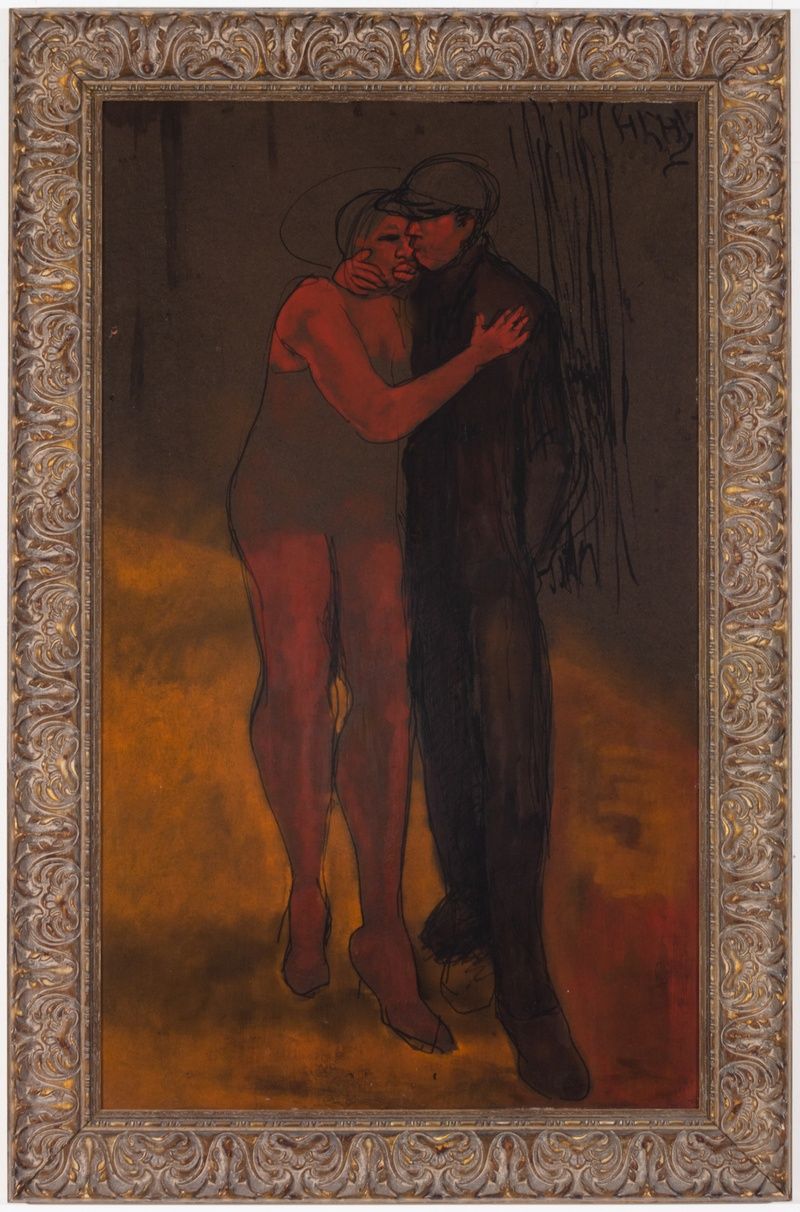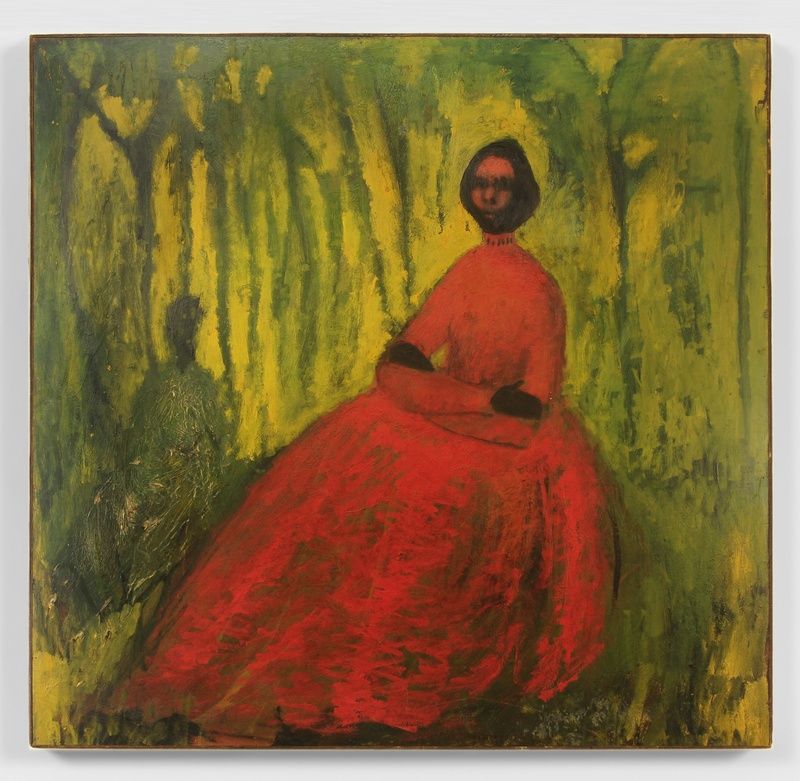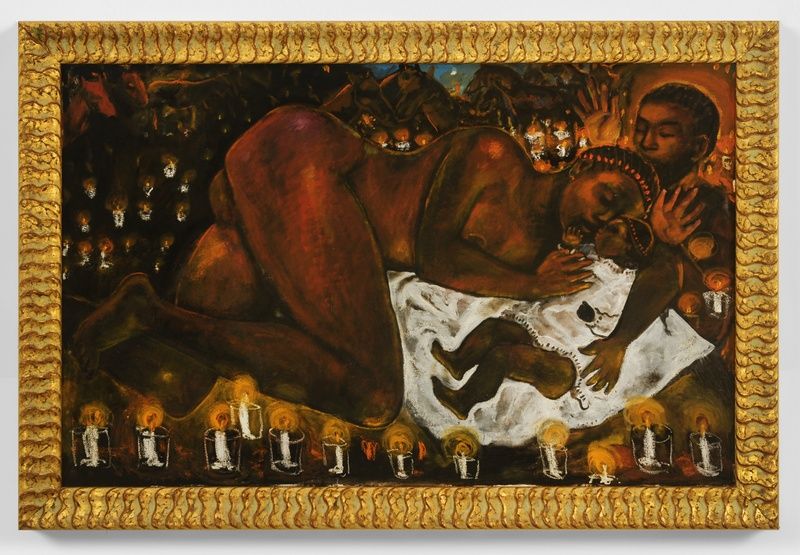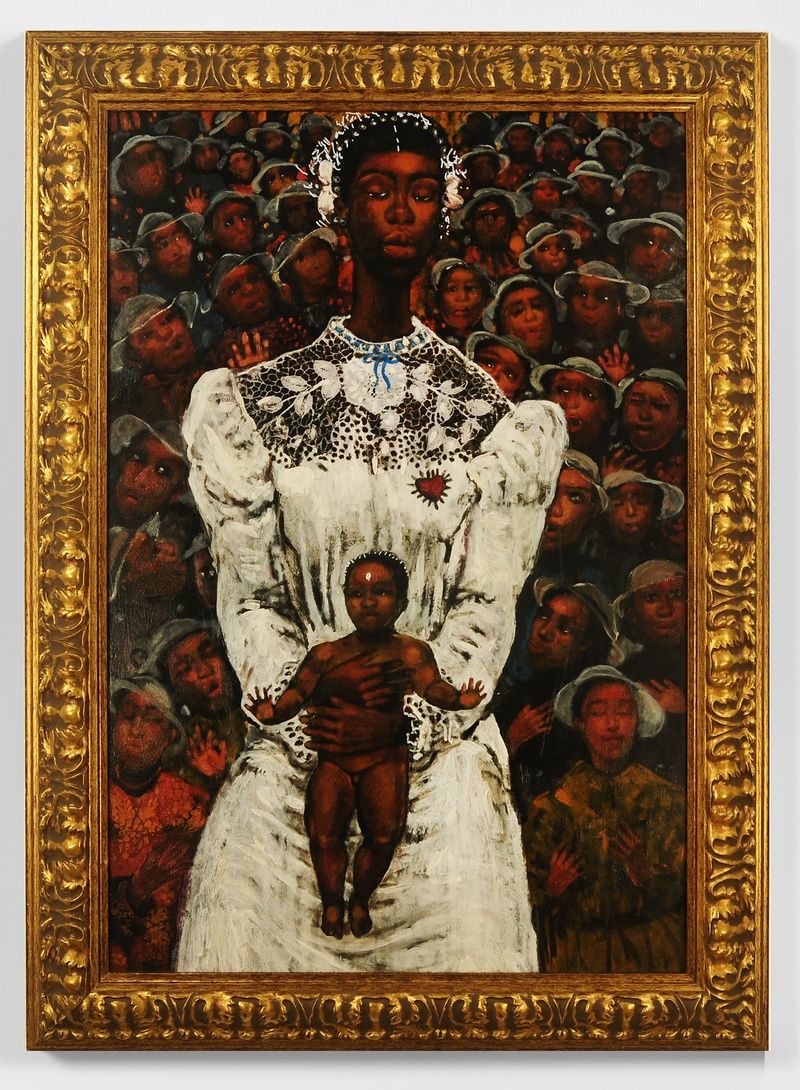James Fuentes Gallery
Geoffrey Holder
GEOFFREY HOLDER
Opening reception: Saturday, February 24, 6-8pm
James Fuentes is thrilled to present the first solo exhibition of works by Geoffrey Holder in Los Angeles, curated by Erica Moiah James. Holder’s work will also be on view at Frieze Los Angeles, Booth D11, February 29–March 3, 2024. Paintings by Geoffrey Holder and his older brother Boscoe Holder will be shown together for the first time at Victoria Miro, London, June 1–July 27, 2024.
Born in Port of Spain, Trinidad and Tobago in 1930, Geoffrey Holder’s prodigious and multi-disciplinary career was underpinned by his practice as a painter. Spanning over five decades of his artistic practice, this exhibition presents a selection of Holder’s earliest paintings from the 1950s alongside works made throughout his life and into the 2000s. The artist’s oeuvre demonstrates a deep interest in representing the totality of black life, registered here in compositions that move from the quiet intimacy of bedrooms and parlors to the lively energy encountered in city streets and nightclubs. Anchored in portraiture, at times Holder’s images are also steeped in religious iconography and a bold reverence for nature—consummately rendered in such a way that they appear at once contemporary, historical, and thus timeless.
From the beginning, Holder’s creativity was inspired by the support of his family. Following the example of his older brother, Boscoe, a leading artist and performer, Geoffrey declared himself an artist at the age of seven. When Boscoe left for London in 1950 Geoffrey took over his dance troupe. In 1953, during his early twenties, Holder relocated from Trinidad to New York City. The move was financed by the sale of a group of his paintings—exemplified by Untitled (1952), depicting two calypso dancers in Holder’s signature style, which emerged during that decade in work is both tender and strong, displaying his deeply intuitive understanding of color, used to powerfully describe emotion as much as form. Holder opened his first solo exhibition in New York in January, 1954, at the Barone Gallery, presenting works directly inspired by his life in Trinidad. By 1956 his work as a painter was recognized with a Guggenheim Fellowship. Also made during Holder’s first decade in the United States, Woman in Red Dress in Forest (c. 1957-1960) affirms a diasporic truth and connection to the beauty of his home and the natural world in a manner that evokes memory—an enduring theme in his life’s work.
In New York, Holder found a muse in his wife-to-be, the distinguished dancer, actress, and choreographer Carmen de Lavallade to whom he proposed days after their first meeting. The couple married in 1955. Throughout their world travels—including a period spent in Paris working with Josephine Baker—wherever home was, they also transported their studio and salon. Eventually settling into a loft on lower Broadway, which also became home to their extraordinary personal art collection, visitors included friends and admirers alike, such as the performer Lena Horne and painters Alice Neel and Francis Bacon.
In life and in work, de Lavallade remained a key inspiration to Holder. Aspects of her features, posture, and presence imprinted on the painter’s memory, entering not only his various portraits of her, but across many other works—consciously or unconsciously—as a kind of ideal female image. In addition to muses conjured from his own life, Holder’s work recalls formal elements of Baule sculpture and the African inspired Modernism of artists like Amedeo Modigliani and Alberto Giacometti. A deeply spiritual person who studied and drew on various faiths, Holder’s works also reflect his unique and personal cosmology. Afro-Caribbean and African practices as well as canonical Christian narratives are transmitted through his expansive imagination. In works like Maria Virginia (1983), Nativity (n.d.), Last Mac (2004), and Adam and Eve (c. 2000-2005), Holder’s distinct aesthetic, art historical, spiritual, and personal motifs meet with his sense of style, wry humor, and corporeal observations.
Holder’s attunement to beauty imbued much of his portraiture with a mysterious quality—likely amplified by the fact that most of his figures were painted from imagination rather than life. Holder engaged the body as if it were a paintbrush or pen; his choreography resembled movements like brushstrokes and, in turn, his paintings reflected an intimate physical sensibility. For Holder, painting provided fertile terrain for his astonishing experimentations in style, representation, and expression. To this day, Holder’s work remains as contemporary as when it was made.
James Fuentes wishes to thank Carmen de Lavallade and Leo Holder.
A true polymath, Geoffrey Holder (b. 1930, Port of Spain, Trinidad; d. 2014, New York, NY) was a painter, photographer, choreographer, director, costume designer, dancer, actor, and composer. Holder has had solo exhibitions at James Fuentes, New York; New York Public Library for the Performing Arts; Soft Box Studios, New York; Mexican Cultural Institute, Washington, DC; National Arts Club, New York; Far Gallery, New York; Griffin Gallery, New York; and Randolph Gallery, Houston, among others. His work has been featured in institutional exhibitions at the Studio Museum in Harlem, New York; the California African American Museum, Los Angeles; DuSable Museum of African American History, Chicago; Nasher Museum of Art, Durham; Museum of the City of New York; National Gallery of Art, Washington DC; and the Corcoran Gallery of Art, Washington, DC, among others. Holder’s works are in the permanent collections of the Barbados Museum, Bridgetown; Studio Museum in Harlem, New York; Columbia University, New York; Katonah Gallery, Katonah; Leonard Hana Collection; Stuart A. Rose Manuscript, Archives, and Rare Book Library, Emory University, Atlanta; and Yale University, New Haven. This exhibition builds on the gallery’s debut presentation of Holder’s work in New York in 2022, curated by Hilton Als. His work was previously on view in Los Angeles in 2014 at the California African American Museum, in the exhibition A Memoir in Movement: Carmen de Lavallade and Geoffrey Holder.
Erica Moiah James is an art historian, curator, and assistant professor at the University of Miami. Her scholarship centers on indigenous, modern, and contemporary art of the Caribbean Americas, and African Diaspora. Select publications of her work include Charles White’s J’Accuse! and the Limits of Universal Blackness (AAAJ, 2016); Every N ***r is a Star: Re-imaging Blackness from Post Civil Rights America to the Post-Independence Caribbean (Black Camera, 2016); Decolonizing Time: Nineteenth Century Haitian Portraiture and the Critique of Anachronism in Caribbean Art (NKA, 2019); The Black Sublime: Rene Pena’s Archangel, 2018 (SX 2019); Ricardo Brey’s Adrift (MER, B&L, 2019); and the book chapters Gust of Grace: Simone Leigh’s Las Meninas, 2019, (CMA and Yale UP, 2022); and La luz de cosas, on the work of artist Juan Francisco Elso (El Museo del Barrio and N.A.M.E. Books, 2023). In 2022 she curated Didier William: nou kite tout sa dèyè for the Museum of Contemporary Art, North Miami and Nari Ward: Home of the Brave at the Vilcek Foundation, New York. Dr. James is the recipient of grants from Warhol Foundation / Creative Time, The Mellon Foundation, and The Terra Foundation, and is a research associate at the Visual Identities in Art and Design Research Center, University of Johannesburg, South Africa. Her forthcoming book is entitled After Caliban: Caribbean Art in the Global Imaginary. Dr. James is currently at work on a publication focusing on the life and work of Geoffrey Holder.
For press inquiries regarding the Estate of Geoffrey Holder please contact Adam Abdalla and Hannah Kay, Cultural Counsel, at [email protected].

Geoffrey Holder
Loving Couple, early 2000s
Signed verso
Oil and china marker on masonite with varnish
46 3/4 × 30 ½ inches (framed)
Works

Portrait of Carmen de Lavallade, 1976
Signed and dated recto
Oil on canvas in artist frame
61 × 40 ½ inches (framed)

Woman in Red Dress in Forest, c. 1957-1960
Signed and inscribed recto
Oil on board in artist frame
46 3/4 × 45 5/8 inches (framed)

Nativity, 2005
Oil and pastel crayon on canvas
35 × 53 inches (framed)

Maria Virginia, 1983
Oil on masonite
42 5/8 × 31 ½ inches (framed)